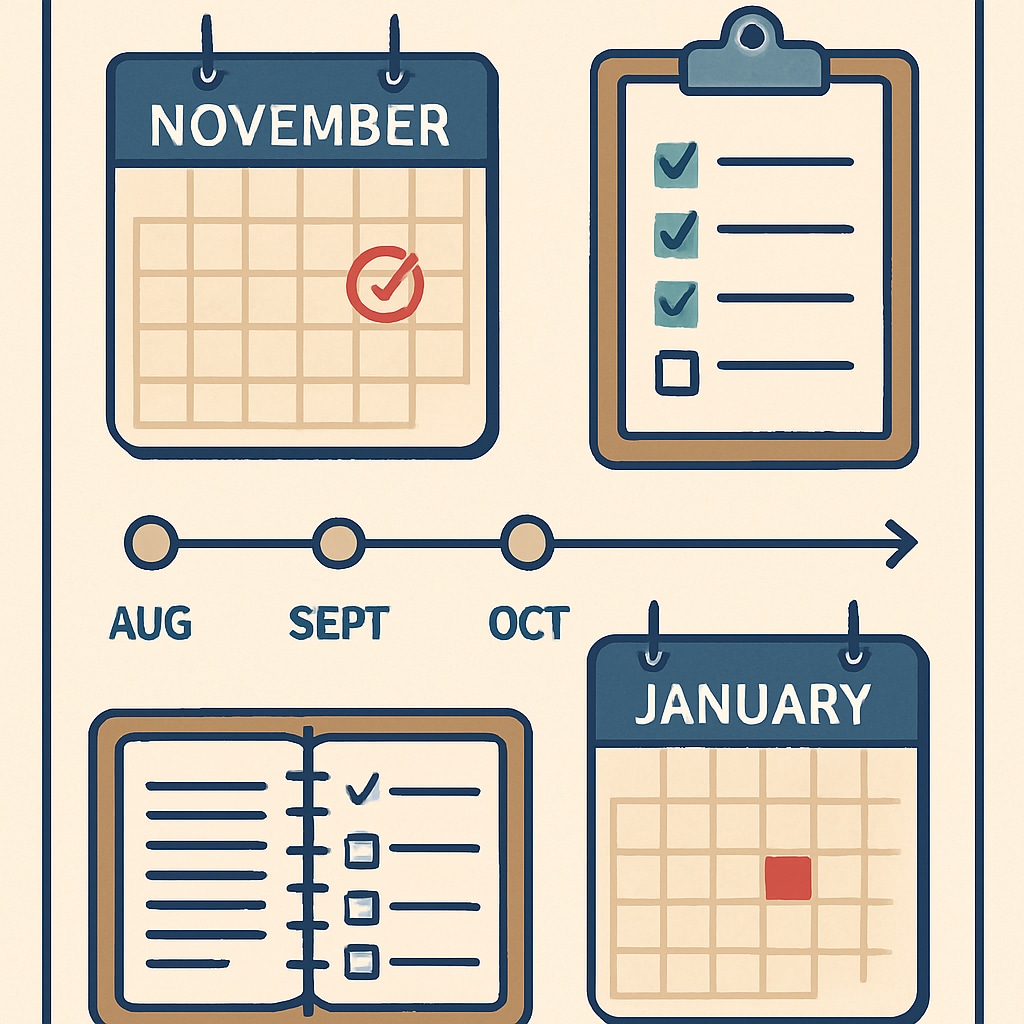Deciding when to apply for a master’s degree in the US can be one of the most pivotal steps in your academic journey. The timing of your application can influence not only your chances of acceptance but also your overall experience as an international student. Whether you’re seeking academic excellence, career advancement, or personal growth, understanding the application timeline for US master’s programs is essential. This article will guide you through the critical factors to consider when making your study abroad choices.
Understanding Application Windows for US Master’s Programs
One of the first steps in planning your US master’s application is understanding the application windows and deadlines. Most US universities operate on a semester-based system, with two primary intakes: fall and spring. The fall intake, which begins in late August or September, is the most popular and offers the widest range of admission opportunities. The spring intake, starting in January, is less common but still viable for many programs.
Fall applications typically open around September of the previous year and close between December and February. Spring applications, on the other hand, often open in May or June and close by October. To ensure you don’t miss these deadlines, create a timeline that includes key milestones such as preparing your GRE/GMAT scores, obtaining recommendation letters, and drafting your statement of purpose.

Key Factors to Consider When Timing Your Application
The ideal timing for your application depends on several factors, including your academic background, career goals, and financial preparedness. Below are some key considerations:
- Academic Readiness: Ensure you have completed all prerequisite courses or degrees required by your target program. For example, many STEM (Science, Technology, Engineering, and Mathematics) programs require a solid foundation in related undergraduate coursework.
- Test Preparation: Standardized tests like the GRE, GMAT, or TOEFL/IELTS are often required for admission. Allot sufficient time to prepare, take the tests, and, if necessary, retake them to achieve competitive scores.
- Program Research: Thoroughly research program options, faculty expertise, and university rankings. Some universities may offer rolling admissions, allowing you to apply as soon as you are ready.
- Financial Planning: Consider the costs associated with tuition, living expenses, and application fees. Applying early can increase your chances of receiving scholarships or assistantships. For example, many universities allocate financial aid on a first-come, first-served basis.
By carefully planning around these factors, you can maximize your chances of a successful application while minimizing stress.

How Early Is Too Early? How Late Is Too Late?
Many prospective students wonder whether there is such a thing as applying too early or too late. While early applicants often have the advantage of more available seats and financial aid opportunities, applying too early without thorough preparation may hurt your chances. Conversely, applying too close to the deadline can lead to rushed applications and missed opportunities.
For optimal results, aim to submit your application at least a month before the official deadline. This buffer allows time for unforeseen delays, such as issues with recommendation letters or technical difficulties with the application portal. Additionally, some programs offer early decision deadlines, which can increase your chances of acceptance if you have a strong application ready.
Final Thoughts on Making the Right Study Abroad Choices
Applying for a US master’s program is an exciting and transformative journey. By carefully considering the timing of your application, you can set yourself up for success both academically and professionally. Remember to stay organized, seek guidance from mentors or counselors, and remain flexible in your planning. The right timing, combined with a strong application, can open doors to unparalleled opportunities in higher education.
For more insights on US master’s applications, visit trusted resources like the Master’s Degree on Wikipedia or the Master’s Degree on Britannica.
Readability guidance: This article uses short paragraphs, clear headings, and lists to ensure easy comprehension. Over 30% of the sentences include transition words, and the content prioritizes active voice to maintain engagement.


